Cupping therapy
Table of Contents
Introduction:
Cupping therapy, also known as suction cup therapy or cup therapy, is an ancient healing technique used by some people to relieve pain.
Eber’s papyrus from Ancient Egypt (1550 B.C.) is among the earliest medical writings to discuss cupping therapy. However, cupping is a component of many other ancient healing systems, such as Chinese, Unani, traditional Korean, and Tibetan.
Hippocrates, the Greek physician who is sometimes called the “father” of medicine, even wrote detailed instructions on how to do cupping procedures.
These days, most practitioners of Traditional Chinese Medicine provide cupping therapy as a treatment.
Supporters believe that the suction helps in the body’s “qi” flow.
Many people think that cupping aids in the body’s yin and yang, or positive and negative, balance. It is believed that reestablishing equilibrium between these two extremes may aid in the body’s capacity to boost blood flow, lessen pain, and resist infections.
What is a Cupping Therapy?
As an alternative therapy, cupping entails applying cups to the skin to induce suction. It is believed that this suction will enhance the circulation of energy in the body and promote healing.
The act of cupping improves blood flow to the surrounding tissue. This might ease tense muscles, which would enhance blood flow generally and encourage cell repair. Additionally, it might aid in the formation of new blood vessels and connective tissues in the tissue.
Cupping is used in conjunction with medical treatment for a variety of ailments and symptoms.
A provider places cups on your arms, legs, back, or other parts of your body, and a vacuum or suction force inside the cup pulls your skin upward. People have been using this form of traditional medicine, which has its roots in China and West Asia, for thousands of years.
Using glass, plastic, or silicone cups to suction the skin, cupping is an alternative form of therapy. It might strengthen immunity, increase blood flow, flush out toxins, and lessen discomfort.
Have you noticed that celebrities are attending events with small, circular marks on their backs more and more frequently? They are the result of cupping therapy. However, what is it?
Who carries out Cupping Therapy?
A range of healthcare professionals, such as the following, can be trained in cupping:
- Chinese moxibusters.
- Doctors of Chiropractic.
- Massage practitioners.
- Medical professionals.
- Physical therapist
Methods for Cupping include:
- Techniques:
- Dry cupping: By pressing a plastic or glass cup against the skin, the air inside is drawn out. Most of the time, you can use the cups both stationary and in motion. The interior of each cup is heated by your provider. The traditional method comprises lighting a cotton ball soaked in alcohol on fire. The vacuum is caused by the heat forcing oxygen out of the cup. A more contemporary method includes emptying the cups of air using a suction mechanism. Your skin is drawn upward into the cup by the vacuum force.
- Hijamas / Bleeding / Wet cupping: Wet cupping leaves a cup in place for around three minutes, which produces a slight suction. After removing the cup, the therapist lightly inclines tiny cuts across your skin using a tiny scalpel. They then perform a second suction to extract a tiny amount of blood. Before applying the cups, your healthcare professional delicately punctures your skin with a needle. This makes it possible for the suctioned blood that is trapped in the cup to release toxins.
- Sliding cupping/ Oil cupping: Sliding cupping, also known as oil cupping, is a massage method in which cups are affixed to the body and moved over an area while massage oils are applied.
- Flash cupping/Empy cupping: Flash cupping, also known as empty cupping, is the rapid, repeated application of cups with little to no retention. It promotes circulation across a larger region and lessens localized traffic.
- Multiple cups may be applied to your skin by your provider, depending on the treatment. Providers often use three to five cups, although they occasionally use seven. Receiving more than seven cups in one treatment is unusual.
- Running: It’s comparable to dry cupping. However, your healthcare professional will apply oil or lotion to your skin before starting. After the cups are in place, they will carefully slide them over the afflicted portion of your body in various directions.
- Suction Method
- Manual Suction: The suction is controlled by hand using a plastic cup pump.
- Cupping fire
- Moxibustion cupping: Combining moxibustion with weak or medium cupping results in Moxibustion Cupping. In TCM, moxibustion is a therapeutic method in which the skin is burned either directly or indirectly with a moxa made of dried mugwort (or artemisia).
- Horn cupping / Raktamokashan by shrung
- Pulsatile cupping: Using a mechanical device, pulsatile cupping creates a pulsatile suction with a pump
- Extra Therapeutic Cupping
- Cupping for acupuncture
- Hot needle holding
- An additional:
- Deep tissue draining and cupping
- Cupping the solar plexus
- Facial Cupping
What results from Cupping Therapy?
Suction is used in cupping to move blood toward or away from particular body parts. Cupping is generally used by people to treat painful conditions. Some claim that it also provides relief from persistent (chronic) health problems. Cupping may reduce the signs and symptoms of:
- Rheumatoid arthritis is one type of arthritis.
- Shoulder, knee, back, and neck pain.
- Breathing problems, including asthma.
- Issues with the digestive system, such as irritable bowel disease (IBD).
- Migraines and headaches.
- Elevated blood pressure, or hypertension.
- Process Specifics
The following conditions may be treated with cupping by therapists:
- Shingles pain
- Facial paralysis
- Spinal disk wear and tear (cervical spondylosis)
- High blood pressure
- Cardiovascular disease prevention
- Musculoskeletal pain
- Lower back pain
- Neck pain
- Fibromyalgia
- Carpal tunnel syndrome
- Headache
- Migraine
- Cellulitis
- Cough
- Cold
- Asthma
- Acne
- Urticaria
- Soft tissue injury
- Arthritis
- Neurodermatitis
Therapists may also employ cupping as a cosmetic method to enhance the skin’s appearance on the face.
How is Cupping carried out?
Researchers are still figuring out how cupping reduces discomfort and illness symptoms. The therapy has not been the subject of much research.
The fluid is drawn into the treated area by suction from cupping. The microscopic blood vessels beneath your skin, known as capillaries, enlarge and rupture due to this suction force. Your body promotes appropriate and typical healing at the cellular level and restores healthy blood flow to the cupped areas.
Some people think that due to this impact, cupping releases pollutants.
How is Cupping performed by medical professionals?
There are various techniques for cupping. The stages differ slightly based on the approach that is selected. The cups will be left in place for a few minutes by your provider. In certain treatments, the region is stretched and massaged by briefly moving the cups.
What kind of cups are they using?
Most suppliers use plastic or glass cups, however, other types of cups include:
- Horn or suction cups
- Fireglass or glass cups
- Hijama or plastic cups
- Wooden or bamboo cups
- Face or silicone cups
- Nabhi pump
- Ceramic.
- Zinc.
- Silica
Effects:
- Skin: Better skin metabolism, better sweat and sebaceous gland function, greater skin resistance, and better healing.
- Muscles: Promotes lymphatic and blood drainage.
- Joints: Increased synovial fluid secretion and blood flow to the joints.
- Digestive system: Better excretion and digestion, increased peristalsis, and release of digestive juices.
- Blood: Better RBC and WBC performance as well as enhanced blood circulation.
- Nervous System: Enhances ANS and stimulates cutaneous sensory nerves.
Among the effects of cupping therapy are:
- Enhancing the blood flow to the skin
- Altering the biomechanical characteristics of the skin
- Raising the threshold for pain
- Enhancing anaerobic (oxygen-free) metabolism locally
- Lowering swelling and increasing cellular immunity
A 2017 study found that the mechanical action of cupping expands the underlying tissue and improves local blood flow.
Many of the purported local and systemic health advantages of cupping therapy may be explained by the activation of Heme oxygenase-1, a gene that is essential in preventing vascular inflammation.
A 2019 study found that while there isn’t a single explanation that can fully account for all of the effects of cupping, some theories include:
- Modifying the molecular makeup and properties of haemoglobin (Hb)
- Modifying the processing of pain signals
- Using counter-irritating, or using pain to reduce pain.
- Increasing blood circulation through the release of nitric oxide.
- Creating fake local inflammation to activate the immune system
- Increasing the level of immune products, such as interferon and tumour necrotizing factors,
- Increasing lymph flow in the lymphatic system,
- Reduction of both forms of cholesterol and uric acid
- More high-quality research is required to confirm the effects of cupping and the processes by which they may or may not help healing, despite the existence of various theories.
Sites for Cupping:
Practitioners apply the cups to various body areas to reap the benefits of cupping. This might or might not be where the pain is. Application sites may comprise:
- Back
- Neck
- Between the shoulders
- Behind the ear
- Middle and crown of the head
- Chin
- Thighs
- Knee joints
- Ankle joints
- Breast
- Hips
- Buttocks
- Wrist joints
According to the data, the back, chest, abdomen, buttocks, and other body parts with significant muscle are the most often used application sites.,
Pain relief: Cupping therapy is often mentioned as a way to relieve pain. Though there is some evidence of its efficacy, more thorough research is required to completely support this, according to specialists.
According to a 2018 meta-analysis, there may be proof that cupping can effectively cure back pain. Again, though, the researchers point out that the majority of the studies were of low quality and that future research has to be more standardized.
A 2018 study reached a similar finding on cupping’s efficacy in treating neck discomfort. The investigators observe that higher calibre research is required to ascertain the efficacy of cupping therapy.
Skin diseases: There is research supporting the use of cupping therapy to treat acne, herpes zoster (shingles), and the discomfort that goes along with it.
Nevertheless, additional thorough, superior research is required to validate the results.
Sports recovery: A growing number of professional sportsmen are using cupping therapy in their recovery practice
However, no consistent evidence was identified in this review to support the efficacy of cupping for anything connected to sports rehabilitation. The researchers stated that more research was required but did not suggest the procedure in favour of or against it.
Cupping should not be done on:
- Veins
- Arteries
- Nerves
- Skin inflammation or lesions
- Body orifices
- Eyes
- Lymph nodes
- Varicose veins
The majority of medical practitioners lack complementary and alternative medicine (CAM) training or experience. Nevertheless, if you decide to include cupping in your treatment regimen, it’s a good idea to let your doctor know.
To benefit from the best of both worlds, keep up with routine medical visits linked to your illness. While it can supplement medical therapy, cupping shouldn’t take the place of it.
What is the duration of my session?
When dry cupping, the cup is left in place for a predetermined amount of time, typically five to ten minutes.
When using wet or bleeding cupping, the practitioner creates a tiny incision to extract blood and then purposefully uses the cup’s suction to remove any remaining blood.
Typically, oil is applied before suction when running cupping. After that, the cups are gradually moved throughout the region to simulate a massage. Your scheduled time may be anywhere from ten minutes to an hour or longer, depending on the type of service you’re getting.
When flash cupping, the cups are usually released in the same generalized area of the body after a brief suctioning. This normally takes five to ten minutes as well.
For what length of time will cupping markings fade away?
After a session, any markings or discolourations from cupping normally disappear seven days later.
Indications
Cupping therapy is recommended for both healthy individuals (as rejuvenation and anti-ageing treatment) and people with medical conditions.
Cupping therapy is beneficial for localized conditions such as knee pain, lower back pain, headaches, and neck pain. Cupping therapy is beneficial for several systemic conditions, including infections, heart disease, rheumatoid arthritis, diabetes mellitus, mental problems, and hypertension. It can be used to treat musculoskeletal, skin, respiratory, digestive, reproductive, and allergy problems.
Contraindications:
- Excessive dry or cracked skin
- Open wound or ulcer
- Fractured bone
- Dislocated joint
- Bleeding disorders
- Severe anaemia
- Muscle dystrophy
- Individuals under the age of seven (for wet cupping) who have an empty stomach, a phobia of blood or bleeding
- Less than 2 years of age for dry cupping
- Abcess
- Excessive swelling
- Pacemaker
Who is not eligible for Cupping?
You should not receive cupping therapy if you are pregnant because the effects of cupping on pregnancy are still mostly unknown to researchers. Also, you should stay away from cupping if you have:
- Anemia.
- A pacemaker.
- Bleeding disorders like haemophilia.
- Issues with blood clotting, such as a history of strokes or deep vein thrombosis (DVT).
- Cardiovascular disease.
- Skin conditions, including eczema and psoriasis.
- Seizures (epilepsy).
Cupping therapy is not for everyone, despite the low risk of consequences. Before attempting cupping or any other alternative medical procedure, consult your physician.
Benefits of Cupping Therapy
Numerous patients using cupping therapy attest to the following:
- Lessens inflammation and discomfort.
- Reduces tenseness in the muscles.
- Boosts blood circulation.
- Expands the range of motion.
- Cupping is useful in lowering inflammation and pain.
- Boosts blood circulation.
- Cupping is useful for relaxation, well-being, and deep tissue massage.
- It’s a cheap, non-invasive, and safe treatment.
- Revitalization of bodily parts.
- Boosts immunity and aids in the healing process.
- Used to treat: Blood disorders like haemophilia and anaemia
- Rheumatic conditions including fibromyalgia and arthritis
- Obstetrical problems
- Skin issues: acne and eczema
- Elevated blood pressure
- Depression, anxiety, and migraines
- Varicose veins
Risks of Cupping Therapy
Cupping therapy is comparatively low-risk. However, you might encounter:
- Bruising.
- Burns from heated cups.
- Fatigue.
- Headaches.
- Muscle tension or soreness.
- Nausea.
- Skin infections, itching, or scarring.
- In rare cases, Vasovagal syncope, or fainting following a reduction in heart rate and blood pressure, can occur. After wet cupping, this is most frequently observed in patients who pass out from needle sticks
Adverse Reactions:
Cupping therapy is a low-risk intervention. Usually, the adverse effects happen during your treatment or right away after. Sweating, nausea, lightheadedness, or dizziness may be felt.
Following treatment, there’s a chance that the skin around the cup’s rim will get inflamed and dotted in a circle. After receiving cupping therapy, there is a chance of infection; however, this can be reduced if the practitioner uses the proper techniques for cleansing the skin and managing infection both before and after the session.
- Burns caused by hot cups.
- Blisters: If left untreated for an extended period, dry cups may cause second-degree burns.
- Fatigue.
- Pain in the head.
- Tense or painful muscles.
- Nausea
- scars, bruising, itching, or infections of the skin.
- Pre-Investigations for Blood Lenting or Wet Cupping:
- Must: Hematogram, BT, CT, and BSL
- Optional: HIV, HBSAG, VDRL, and PT INR
Complications:
The adverse consequences of cupping are rather low. The adverse effects that you can encounter usually happen during. The adverse effects that you can encounter usually happen during or right after your therapy, and they include:
- Circular marks where the cups have been placed
- Discolouration of skin
- Dizziness
- During your therapy, you can feel faint or lightheaded. On rare occasions, you might also feel queasy or perspire.
Following treatment, there’s a chance that the skin around the cup’s rim will get inflamed and dotted in a circle. Post-session, you can experience pain at the sites of your incisions.
Other dangers consist of:
- Injury to the skin
- Hematoma, or bruises
See your practitioner if any of these problems arise for you. To help you avoid any discomfort before your session, they might suggest treatments or actions you can take.
Always do extensive research about practitioners to keep yourself safe. You can also find out if your doctor is recognized by the National Certification Commission for Oriental Medicine and Acupuncture (NCCAOM).
After receiving cupping therapy, especially wet/bleeding cupping, infection is always a possibility. If your practitioner cleans your skin properly and controls infection before and after your session, the danger is minimal and frequently nonexistent.
Does Cupping remove toxins?
As per the previously mentioned studies, cupping has the potential to eliminate toxins by inducing a systemic and local immune response.
Additionally, it might get rid of uric acid, a waste product that comes naturally from the digestion of some foods. High blood and urine acidity levels can result from uric acid accumulation.
Additionally, beneficial effects of cupping may be seen on the lymphatic system, which helps your body get rid of waste.
An interruption in lymph flow can lead to fluid retention and impair the body’s ability to adequately rid itself of toxins. Massage with lymphatic drainage is one way to address this problem. In a similar vein, cupping might facilitate better lymph flow and reduce fluid accumulation.
Although the data for cupping’s ability to eliminate pollutants is encouraging, more studies are required to validate it.
What can I expect from a Cupping treatment?
Cupping is occasionally used in conjunction with acupuncture procedures. You could also wish to fast for two to three hours before your cupping session, or just have light meals, for optimal outcomes.
Following a cupping procedure, you should anticipate the following:
- Inquiring about the symptoms you’ve been having, your practitioner will probably take a thorough medical history if this is your first appointment.
- Your skin will be covered with cups by the practitioner.
- You’ll feel pressure and a sucking sensation as the cups are suctioned.
- The cups can be placed by the practitioner using only heat or suction.
- The practitioner may leave you to relax for a few minutes after performing a certain style of cupping before coming back to remove the cups.
- After your session, you can notice light bruising and redness on your skin.
- Before beginning treatment, make sure you find out from your practitioner whatever kind of cupping they plan to utilize. This might involve running, facial cupping, wet or bleeding, and more.
How successful is Cupping?
The research supporting the efficacy of cupping is varied. Experts list a variety of potential benefits for cupping. A mix of these factors could lead to cupping’s success.
As an illustration, cupping therapy may:
- Motivate whole body ease and relaxation.
- Raise your pain threshold
- Decrease inflammation.
- Boost your blood flow.
- Remove toxins from the body.
- Lower low-density lipoprotein (LDL) and cholesterol levels.
- help in the prevention of heart conditions including atherosclerosis.
- Red blood cell count rises.
- Your peripheral nerve system should be stimulated.
The majority of medical professionals advise cupping as a supplemental medicine procedure. Put another way, you should not employ it as a stand-alone procedure, but rather in conjunction with conventional Western medicine.
Summary
For thousands of years, people have utilized cupping treatment to treat pain, headaches, and other illnesses. Although there isn’t much evidence to support success stories, cupping appears to be effective for certain people and carries few hazards.
Nevertheless, before attempting cupping or any other alternative medicine, consult a medical professional. Your healthcare physician might be able to suggest a professional or expert who is qualified to administer the alternative therapy securely and efficiently.
FAQs
A therapist applies special cups to your skin for a few minutes to create suction during cupping therapy, an ancient type of alternative medicine. People receive it for a variety of reasons, including as deep-tissue massage or to help with pain, inflammation, blood flow, relaxation, and overall well-being.
Here are some skin benefits of cupping.
Because more blood is flowing through the skin cells, waste items like free radicals are removed, which has a detoxifying effect. This element also helps to nourish skin cells, and the increased oxygen flow guarantees that your skin cells receive the essential nutrients.
It is thought that cupping therapy works by bringing more blood to the strained area, which can help reduce pain, enhance circulation, and reduce inflammation. Additionally, it is believed to aid in stimulating lymphatic fluid flow, which may aid in the body’s detoxification.
A particular kind of cup is applied to the trouble spot, producing a vacuum that improves circulation. The cups are applied on tense or inflamed muscle trigger points. Back discomfort, tense muscles, and pinched nerves can all be treated with cupping.
It’s just a matter of cracking the skin’s surface to allow toxins to be released. Every individual bleeds differently, based on the blood’s composition and the state of the cupped area. Some people may bleed a lot by nature, while others may not bleed at all. These are both perfectly normal.

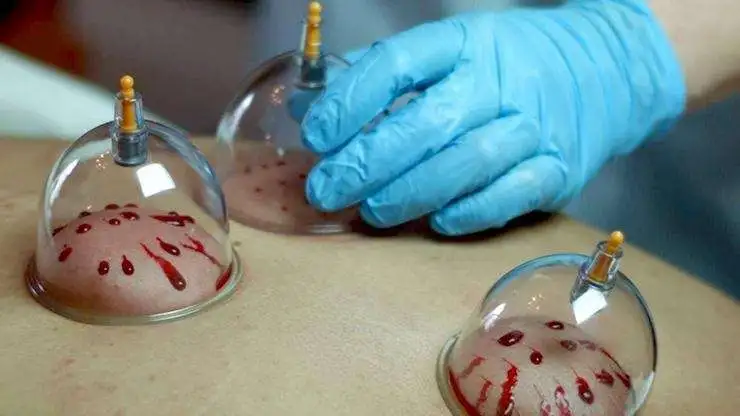
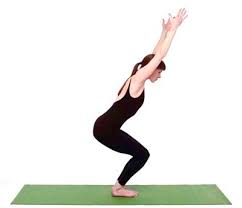
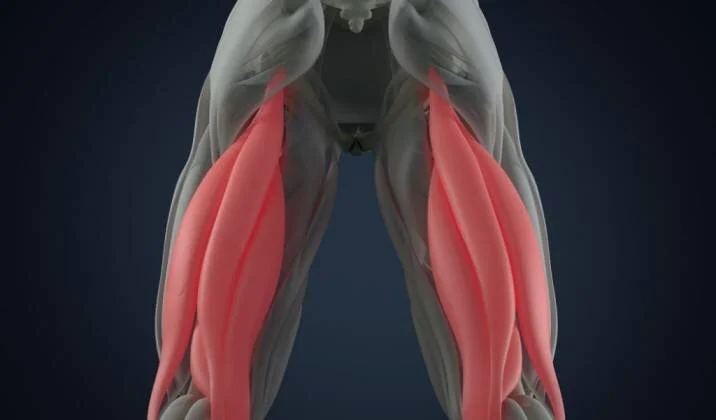
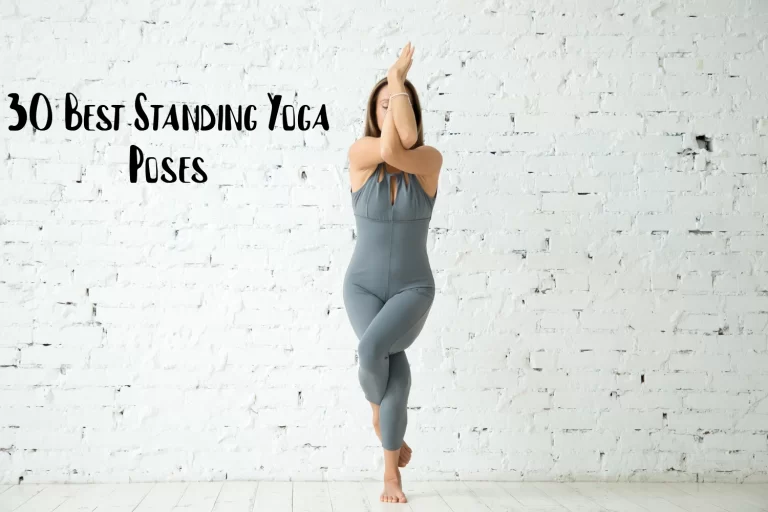
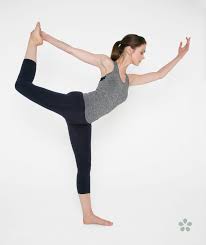
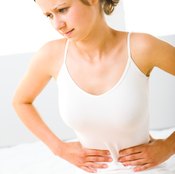
One Comment